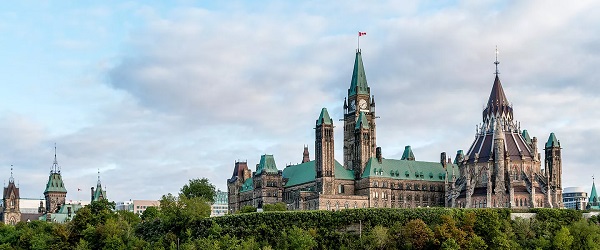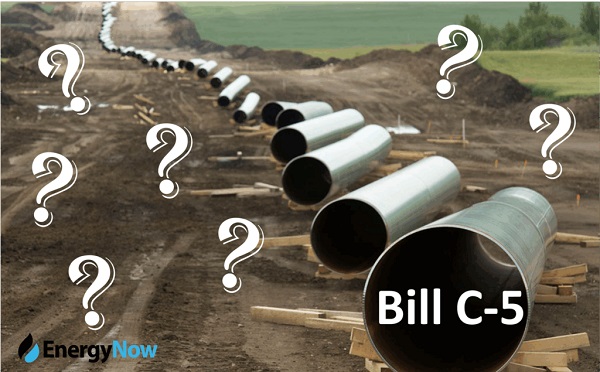Alberta
Fortis et Liber: Alberta’s Future in the Canadian Federation
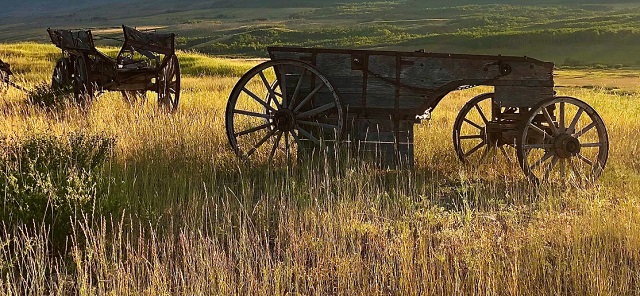
From the C2C Journal
By Barry Cooper, professor of political science, University of Calgary
Canada’s western lands, wrote one prominent academic, became provinces “in the Roman sense” – acquired possessions that, once vanquished, were there to be exploited. Laurentian Canada regarded the hinterlands as existing primarily to serve the interests of the heartland. And the current holders of office in Ottawa often behave as if the Constitution’s federal-provincial distribution of powers is at best advisory, if it needs to be acknowledged at all. Reviewing this history, Barry Cooper places Alberta’s widely criticized Sovereignty Act in the context of the Prairie provinces’ long struggle for due constitutional recognition and the political equality of their citizens. Canada is a federation, notes Cooper. Provinces do have rights. Constitutions do mean something. And when they are no longer working, they can be changed.
Alberta
Alberta’s government is investing $5 million to help launch the world’s first direct air capture centre at Innisfail
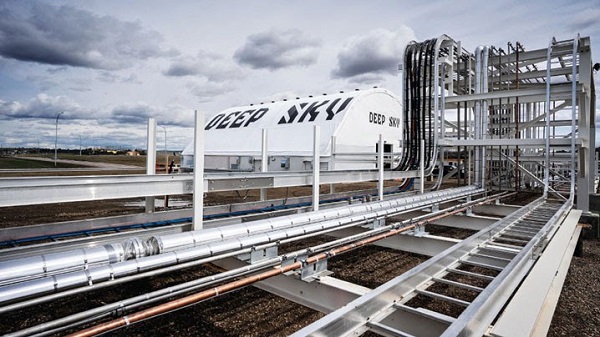
Taking carbon capture to new heights
Alberta’s government is investing $5 million from the TIER fund to help launch the world’s first direct air capture centre.
Alberta is a global leader in environmentally responsible energy production and reducing emissions, already home to two of the largest carbon capture, utilization and storage facilities operating in North America, and seeing emissions decline across the economy.
Most of the current technologies used around the world focus on facilities and worksites. Direct air capture offers a potential new way of removing greenhouse gas emissions straight from the air. If successful, the potential is huge.
Through Emissions Reduction Alberta, $5 million is being invested from the industry-led TIER program to help Deep Sky in the design, build and operation of the world’s first direct air capture innovation and commercialization centre in Innisfail. This funding will help Alberta keep showing the world how to reduce emissions while creating jobs and increasing responsible energy production.
“We don’t need punitive taxes, anti-energy regulations or nonsensical production caps to reduce emissions. Our approach is to support industry, Alberta expertise and innovation by helping to de-risk new technology. Direct air capture has some potential and is being looked at in other jurisdictions, so it’s great to see companies choosing Alberta as a place to invest and do business in.”
“Alberta companies are leaders in developing carbon capture and storage technology. Deep Sky has the potential to take the next major step in decarbonization through direct air capture. These advancements and investments through the TIER fund are a major reason why global demand is increasing for our responsibly produced energy products.”
“Investing in Deep Sky supports Alberta’s global leadership in emissions reduction. This project accelerates cutting-edge carbon removal technologies, creates jobs and builds a platform for innovation. By capturing legacy emissions, it complements other climate solutions and positions Alberta at the forefront of a growing carbon removal economy.”
“We are thrilled to be supported by the Government of Alberta through Emissions Reduction Alberta’s investment to help deliver a world first in carbon removals right here in Alberta. This funding will be instrumental in scaling direct air capture and creating an entirely new economic opportunity for Alberta, Canada and the world.”
Deep Sky is helping establish Alberta as a global leader in carbon removal – an emerging field that is expected to grow exponentially over the next decade. The new centre is located on a five-acre site and will feature up to 10 direct air capture units, allowing multiple technologies and concepts to be tested at once. Starting this summer, Deep Sky Alpha’s units will begin pulling in air, trapping carbon dioxide, transporting it by truck, and safely storing it underground at an approved site in Legal.
This new technology will give Alberta’s oil and gas, energy and utilities, cement and heavy industry, and agriculture and agri-tech sectors new technologies to reduce emissions, while creating local jobs and reinforcing Alberta’s position as a global leader in responsible energy development.
Quick facts
- Deep Sky aims to capture 3,000 tonnes of emissions each year and estimates creating 80 construction jobs, 15 permanent jobs, and more than $100 million in local economic benefit over the next 10 years, including regional development in rural communities.
- Research shows that carbon capture technology is safe and effective. Careful site selection and rigorous monitoring serve to ensure the injected carbon dioxide remains sequestered thousands of metres below the surface, with no impact on fresh water, plants or the soil.
- Provincial funding for this project is delivered through Emissions Reduction Alberta’s Continuous Intake Program, funded by Alberta’s industry-funded Technology Innovation and Emissions Reduction (TIER) system.
Related information
Alberta
The permanent CO2 storage site at the end of the Alberta Carbon Trunk Line is just getting started
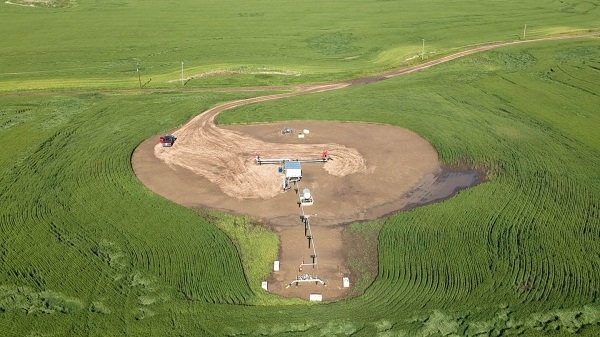
Wells at the Clive carbon capture, utilization and storage project near Red Deer, Alta. Photo courtesy Enhance Energy
From the Canadian Energy Centre
Inside Clive, a model for reducing emissions while adding value in Alberta
It’s a bright spring day on a stretch of rolling farmland just northeast of Red Deer. It’s quiet, but for the wind rushing through the grass and the soft crunch of gravel underfoot.
The unassuming wellheads spaced widely across the landscape give little hint of the significance of what is happening underground.
In just five years, this site has locked away more than 6.5 million tonnes of CO₂ — equivalent to the annual emissions of about 1.5 million cars — stored nearly four CN Towers deep beneath the surface.
The CO₂ injection has not only reduced emissions but also breathed life into an oilfield that was heading for abandonment, generating jobs, economic activity and government revenue that would have otherwise been lost.
This is Clive, the endpoint of one of Canada’s largest carbon capture, utilization and storage (CCUS) projects. And it’s just getting started.
Rooted in Alberta’s first oil boom
Clive’s history ties to Alberta’s first oil boom, with the field discovered in 1952 along the same geological trend as the legendary 1947 Leduc No. 1 gusher near Edmonton.
“The Clive field was discovered in the 1950s as really a follow-up to Leduc No. 1. This is, call it, Leduc No. 4,” said Chris Kupchenko, president of Enhance Energy, which now operates the Clive field.
Over the last 70 years Clive has produced about 70 million barrels of the site’s 130 million barrels of original oil in place, leaving enough energy behind to fuel six million gasoline-powered vehicles for one year.
“By the late 1990s and early 2000s, production had gone almost to zero,” said Candice Paton, Enhance’s vice-president of corporate affairs.
“There was resource left in the reservoir, but it would have been uneconomic to recover it.”
Gearing up for CO2
Calgary-based Enhance bought Clive in 2013 and kept it running despite high operating costs because of a major CO2 opportunity the company was developing on the horizon.
In 2008, Enhance and North West Redwater Partnership had launched development of the Alberta Carbon Trunk Line (ACTL), one of the world’s largest CO2 transportation systems.
Wolf Midstream joined the project in 2018 as the pipeline’s owner and operator.
Completed in 2020, the groundbreaking $1.2 billion project — supported by the governments of Canada and Alberta — connects carbon captured at industrial sites near Edmonton to the Clive facility.
“With CO2 we’re able to revitalize some of these fields, continue to produce some of the resource that was left behind and permanently store CO2 emissions,” Paton said.
An oversized pipeline on purpose
Each year, about 1.6 million tonnes of CO2 captured at the NWR Sturgeon Refinery and Nutrien Redwater fertilizer facility near Fort Saskatchewan travels down the trunk line to Clive.
In a unique twist, that is only about 10 per cent of the pipeline’s available space. The project partners intentionally built it with room to grow.
“We have a lot of excess capacity. The vision behind the pipe was, let’s remove barriers for the future,” Kupchenko said.
The Alberta government-supported goal was to expand CCS in the province, said James Fann, CEO of the Regina-based International CCS Knowledge Centre.
“They did it on purpose. The size of the infrastructure project creates the opportunity for other emitters to build capture projects along the way,” he said.

CO2 captured at the Sturgeon Refinery near Edmonton is transported by the Alberta Carbon Trunk Line to the Clive project. Photo courtesy North West Redwater Partnership
Extending the value of aging assets
Building more CCUS projects like Clive that incorporate enhanced oil recovery (EOR) is a model for extending the economic value of aging oil and gas fields in Alberta, Kupchenko said.
“EOR can be thought of as redeveloping real estate,” he said.
“Take an inner-city lot with a 700-square-foot house on it. The bad thing is there’s a 100-year-old house that has to be torn down. But the great thing is there’s a road to it. There’s power to it, there’s a sewer connection, there’s water, there’s all the things.
“That’s what this is. We’re redeveloping a field that was discovered 70 years ago and has at least 30 more years of life.”
The 180 existing wellbores are also all assets, Kupchenko said.
“They may not all be producing oil or injecting CO2, but every one of them is used. They are our eyes into the reservoir.”

CO2 injection well at the Clive carbon capture, utilization and storage project. Photo for the Canadian Energy Centre
Alberta’s ‘beautiful’ CCUS geology
The existing wells are an important part of measurement, monitoring and verification (MMV) at Clive.
The Alberta Energy Regulator requires CCUS projects to implement a comprehensive MMV program to assess storage performance and demonstrate the long-term safety and security of CO₂.
Katherine Romanak, a subsurface CCUS specialist at the University of Texas at Austin, said that her nearly 20 years of global research indicate the process is safe.
“There’s never been a leak of CO2 from a storage site,” she said.
Alberta’s geology is particularly suitable for CCUS, with permanent storage potential estimated at more than 100 billion tonnes.
“The geology is beautiful,” Romanak said.
“It’s the thickest reservoir rocks you’ve ever seen. It’s really good injectivity, porosity and permeability, and the confining layers are crazy thick.”
CO2-EOR gaining prominence
The extra capacity on the ACTL pipeline offers a key opportunity to capitalize on storage potential while addressing aging oil and gas fields, according to the Alberta government’s Mature Asset Strategy, released earlier this year.
The report says expanding CCUS to EOR could attract investment, cut emissions and encourage producers to reinvest in existing properties — instead of abandoning them.
However, this opportunity is limited by federal policy.
Ottawa’s CCUS Investment Tax Credit, which became available in June 2024, does not apply to EOR projects.
“Often people will equate EOR with a project that doesn’t store CO2 permanently,” Kupchenko said.
“We like to always make sure that people understand that every ton of CO2 that enters this project is permanently sequestered. And we take great effort into storing that CO2.”
The International Energy Forum — representing energy ministers from nearly 70 countries including Canada, the U.S., China, India, Norway, and Saudi Arabia — says CO₂-based EOR is gaining prominence as a carbon sequestration tool.
The technology can “transform a traditional oil recovery method into a key pillar of energy security and climate strategy,” according to a June 2025 IEF report.
Tapping into more opportunity
In Central Alberta, Enhance Energy is advancing a new permanent CO2 storage project called Origins that is designed to revitalize additional aging oil and gas fields while reducing emissions, using the ACTL pipeline.
“Origins is a hub that’s going to enable larger scale EOR development,” Kupchenko said.
“There’s at least 10 times more oil in place in this area.”
Meanwhile, Wolf Midstream is extending the pipeline further into the Edmonton region to transport more CO2 captured from additional industrial facilities.
-
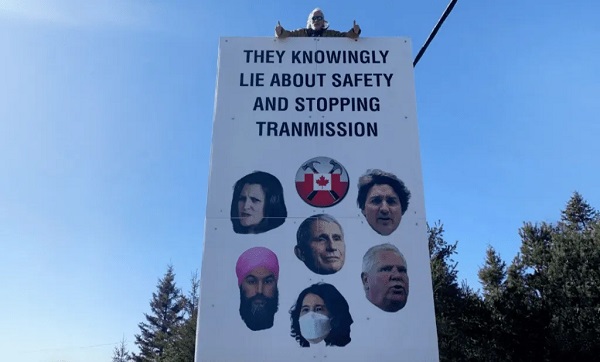
 COVID-191 day ago
COVID-191 day agoOntario man launches new challenge against province’s latest attempt to ban free expression on roadside billboards
-

 Energy2 days ago
Energy2 days agoThis Canada Day, Celebrate Energy Renewal
-

 COVID-1915 hours ago
COVID-1915 hours agoNew Peer-Reviewed Study Affirms COVID Vaccines Reduce Fertility
-

 Business11 hours ago
Business11 hours agoOttawa Funded the China Ferry Deal—Then Pretended to Oppose It
-
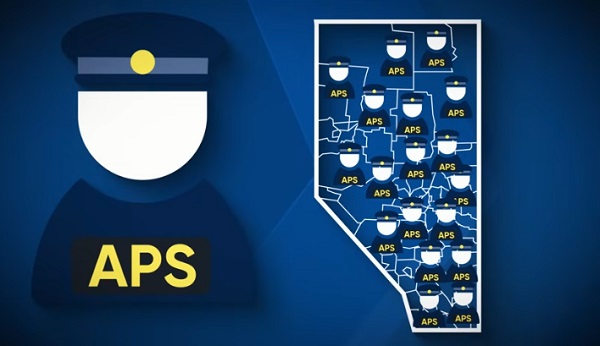
 Alberta1 day ago
Alberta1 day agoAlberta Next Takes A Look At Alberta Provincial Police Force
-
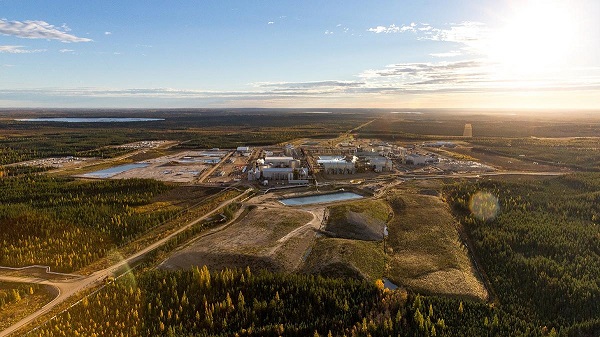
 Alberta2 days ago
Alberta2 days agoCanadian Oil Sands Production Expected to Reach All-time Highs this Year Despite Lower Oil Prices
-

 MAiD13 hours ago
MAiD13 hours agoCanada’s euthanasia regime is not health care, but a death machine for the unwanted
-
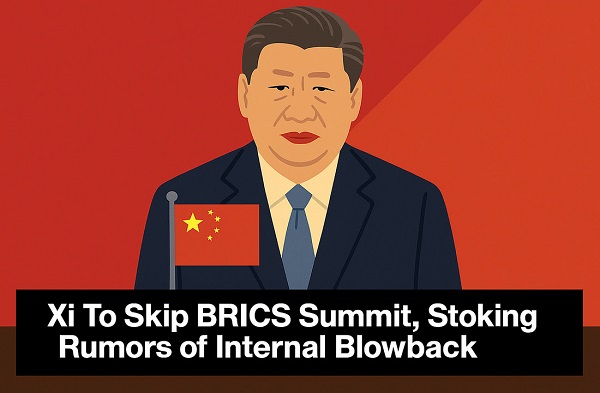
 International2 days ago
International2 days agoPresident Xi Skips Key Summit, Adding Fuel to Ebbing Power Theories


 For 200 years Rupert’s Land (its flag shown on top left) along with the Northwest and Northeast Territories were the exclusive commercial domain of the Hudson’s Bay Company (HBC), granted by the British Crown; Great Britian officially transferred these vast lands to the Crown in Right of Canada in 1870. (Source of map:
For 200 years Rupert’s Land (its flag shown on top left) along with the Northwest and Northeast Territories were the exclusive commercial domain of the Hudson’s Bay Company (HBC), granted by the British Crown; Great Britian officially transferred these vast lands to the Crown in Right of Canada in 1870. (Source of map:  Obscure but legally important: Canada is often said to have “purchased” Rupert’s Land from the Hudson’s Bay Company, but Canada did not actually pay for the land, only for the company’s capital improvements such as Lower Fort Garry in the Rural Municipality of St. Andrews (aka the Stone Fort, top), Fort Edmonton (middle), depicted here after construction of Alberta’s Legislative Assembly building, and the Hudson’s Bay Brigade Trail (bottom). (Sources of images: (top)
Obscure but legally important: Canada is often said to have “purchased” Rupert’s Land from the Hudson’s Bay Company, but Canada did not actually pay for the land, only for the company’s capital improvements such as Lower Fort Garry in the Rural Municipality of St. Andrews (aka the Stone Fort, top), Fort Edmonton (middle), depicted here after construction of Alberta’s Legislative Assembly building, and the Hudson’s Bay Brigade Trail (bottom). (Sources of images: (top)  “Enter the Union on an equal basis with existing states”: In contrast to Canada, the U.S. Northwest Ordinance of 1787 provided a formal and transparent mechanism by which newly settled territories could graduate to statehood if they met certain conditions – gaining the same rights and privileges as the original 13 states.
“Enter the Union on an equal basis with existing states”: In contrast to Canada, the U.S. Northwest Ordinance of 1787 provided a formal and transparent mechanism by which newly settled territories could graduate to statehood if they met certain conditions – gaining the same rights and privileges as the original 13 states. “Our lives our fortunes and our sacred honour”: Métis leaders Louis Riel (top left) and John Bruce (top right) saw the 1870 transfer of Rubert’s Land to Canada as an act of “abandonment” by the British Crown; to protect the interests of the Red River Settlement (bottom), they “refus[ed] to recognise the authority of Canada.” (Sources: (top left photo) Library and Archives Canada, C-018082; (top right photo)
“Our lives our fortunes and our sacred honour”: Métis leaders Louis Riel (top left) and John Bruce (top right) saw the 1870 transfer of Rubert’s Land to Canada as an act of “abandonment” by the British Crown; to protect the interests of the Red River Settlement (bottom), they “refus[ed] to recognise the authority of Canada.” (Sources: (top left photo) Library and Archives Canada, C-018082; (top right photo)  “Provinces in the Roman sense”: According to political scientist James Mallory, Canada’s Prairie provinces were akin to “provinciae” in ancient Rome – conquered lands whose inhabitants were not citizens and who existed to serve the interests of the Imperial Capital and the Italian heartland. Shown, the fall of Macedonia in 168 BC depicted in The Triumph of Aemilius Paulus by Carle Vernet, 1789. (Source of painting:
“Provinces in the Roman sense”: According to political scientist James Mallory, Canada’s Prairie provinces were akin to “provinciae” in ancient Rome – conquered lands whose inhabitants were not citizens and who existed to serve the interests of the Imperial Capital and the Italian heartland. Shown, the fall of Macedonia in 168 BC depicted in The Triumph of Aemilius Paulus by Carle Vernet, 1789. (Source of painting:  In 1905 the Dominion of Canada carved the new provinces of Alberta and Saskatchewan out of portions of the Northwest Territories; the newcomers were treated as distinctly second-class in comparison to the original provinces, among other things only gaining full control over their lands and natural resources in 1930. (Sources of photos (clockwise, starting top-left):
In 1905 the Dominion of Canada carved the new provinces of Alberta and Saskatchewan out of portions of the Northwest Territories; the newcomers were treated as distinctly second-class in comparison to the original provinces, among other things only gaining full control over their lands and natural resources in 1930. (Sources of photos (clockwise, starting top-left):  The Prairie provinces continued to be subjected to destructive Laurentian policies throughout the 20th century, such as prolongation of the Canadian Wheat Board, official bilingualism and the National Energy Program, implemented by Pierre Trudeau in 1981 (shown on bottom left, to the right of Alberta premier Peter Lougheed in the centre). Depicted on bottom right, oil sands facility at Mildred Lake. (Sources of photos: (top left) Canadian Government Motion Picture Bureau/Library and Archives Canada/C-064834; (bottom left) The Canadian Press/Dave Buston; (bottom right)
The Prairie provinces continued to be subjected to destructive Laurentian policies throughout the 20th century, such as prolongation of the Canadian Wheat Board, official bilingualism and the National Energy Program, implemented by Pierre Trudeau in 1981 (shown on bottom left, to the right of Alberta premier Peter Lougheed in the centre). Depicted on bottom right, oil sands facility at Mildred Lake. (Sources of photos: (top left) Canadian Government Motion Picture Bureau/Library and Archives Canada/C-064834; (bottom left) The Canadian Press/Dave Buston; (bottom right)  “It’s not like Ottawa is a national government”: The Alberta Sovereignty within a United Canada Act, passed in late 2022 by the UCP government of Premier Danielle Smith, pictured, aims to strengthen the province’s ability to limit unconstitutional intrusions of federal policy and law into areas of provincial jurisdiction, thereby reaffirming that Canada is a federal state. (Source of photo: The Canadian Press/Jason Franson)
“It’s not like Ottawa is a national government”: The Alberta Sovereignty within a United Canada Act, passed in late 2022 by the UCP government of Premier Danielle Smith, pictured, aims to strengthen the province’s ability to limit unconstitutional intrusions of federal policy and law into areas of provincial jurisdiction, thereby reaffirming that Canada is a federal state. (Source of photo: The Canadian Press/Jason Franson) Although attacked by critics, Alberta’s Sovereignty Act has received strong popular support for challenging the Justin Trudeau government’s constant intrusions into areas of provincial constitutional jurisdiction; the author points out that the Constitution does not require provinces to enforce federal laws, and that the Supreme Court of Canada has confirmed this. Shown, supporters of the Sovereignty Act outside the Alberta legislature, December 2022. (Source of photo:
Although attacked by critics, Alberta’s Sovereignty Act has received strong popular support for challenging the Justin Trudeau government’s constant intrusions into areas of provincial constitutional jurisdiction; the author points out that the Constitution does not require provinces to enforce federal laws, and that the Supreme Court of Canada has confirmed this. Shown, supporters of the Sovereignty Act outside the Alberta legislature, December 2022. (Source of photo:  “Clear majority on a clear question”: Two years after the 1998 Quebec Secession Reference case before the Supreme Court of Canada, the Liberal government of Jean Chrétien (on bottom, leaning forward) introduced the Clarity Act, establishing the conditions under which Canadian provinces may be allowed to begin the process of secession. The author considers this another act violating the concept of federalism, with Ottawa unilaterally calling the shots and placing provinces in a subordinate position. (Sources of photos: (top)
“Clear majority on a clear question”: Two years after the 1998 Quebec Secession Reference case before the Supreme Court of Canada, the Liberal government of Jean Chrétien (on bottom, leaning forward) introduced the Clarity Act, establishing the conditions under which Canadian provinces may be allowed to begin the process of secession. The author considers this another act violating the concept of federalism, with Ottawa unilaterally calling the shots and placing provinces in a subordinate position. (Sources of photos: (top) 





